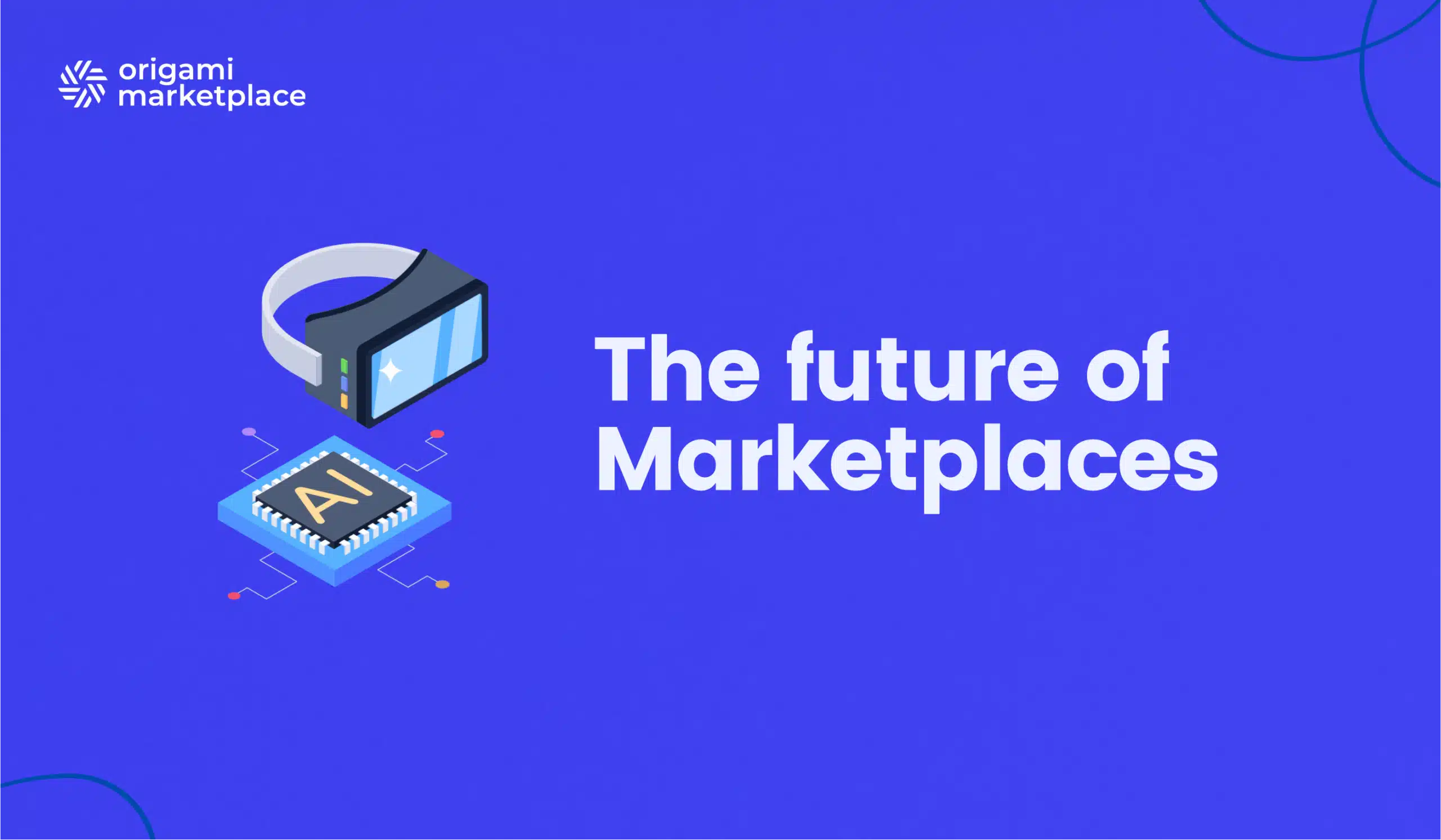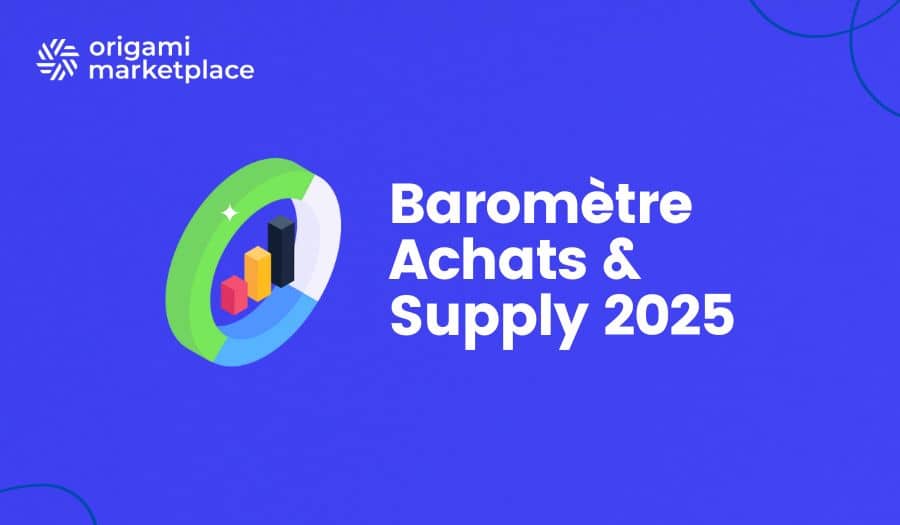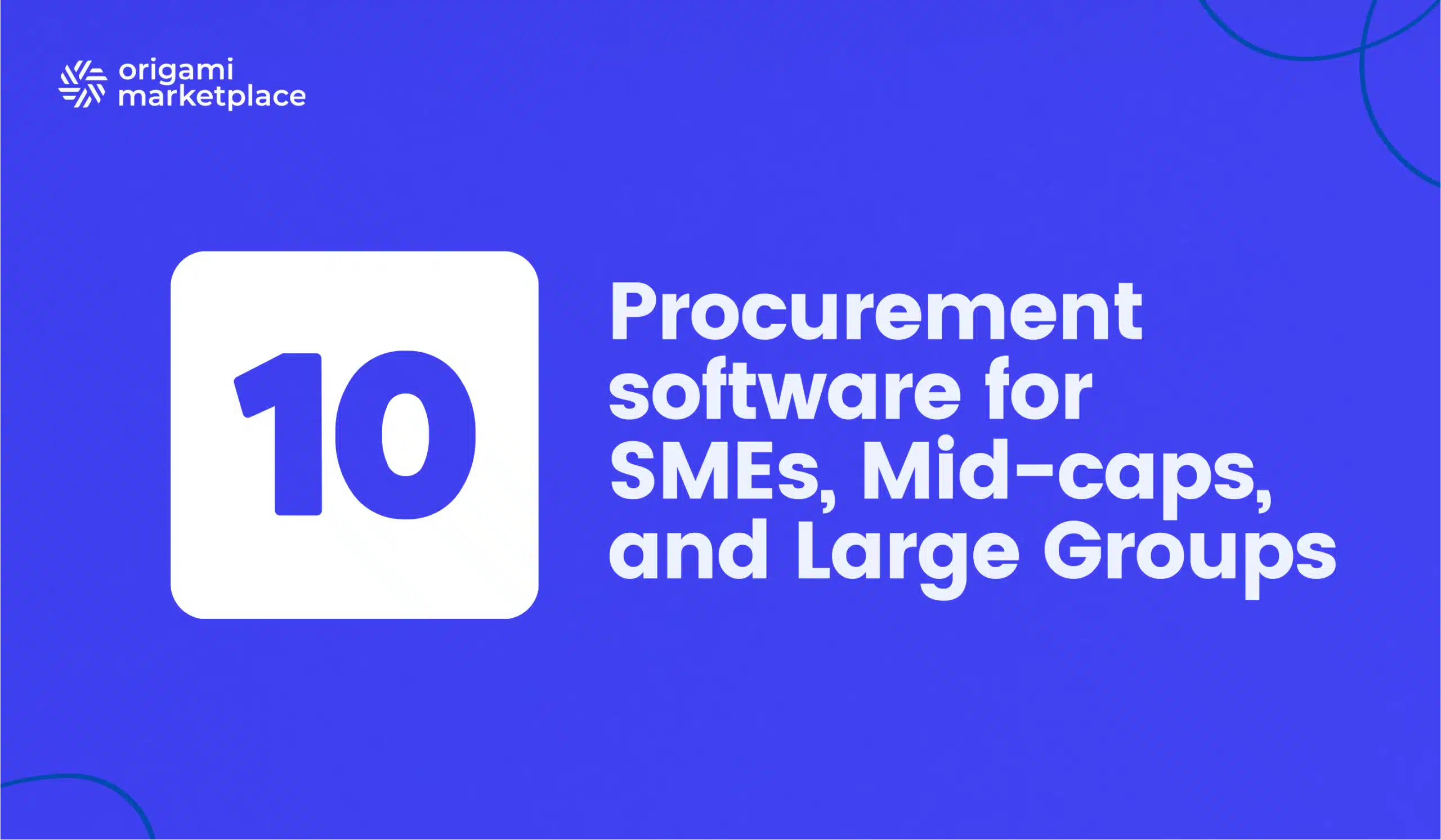The future of marketplaces: AI, Virtual Reality, traceability, and more
- Arnaud
- 11 minutes reading

In the coming years, marketplaces will no longer be content simply to showcase products: they will evolve into genuine ecosystems where AI, augmented reality, blockchain, and even social networks play a pivotal role in offering seamless, immersive, and personalized shopping journeys. Rapid technological change, shifting consumer behaviors, and the rise of mobile commerce will create new opportunities, but also unprecedented challenges for operators. In this context, we are also witnessing the emergence of increasingly specialized marketplaces in specific sectors, designed to meet niche needs and deliver a highly targeted experience. Furthermore, the tightening of data protection requirements, particularly under the GDPR, compels industry players to rethink their processes and adopt more robust compliance strategies.
In this article, we explore the levers that will profoundly transform marketplaces and present practical avenues for adaptation logistics automation, AI, big data, AR/VR, blockchain, installment payment options, multichannel customer experiences, and more. The key watchword? Anticipate and harness innovation for real customer value, while building solid foundations (data infrastructure, strategic partnerships, governance) to sustain long-term growth.
1. The advent of “Invisible” yet omnipresent AI
2. From e-Commerce to immersive experiences with Augmented Reality (AR) and Virtual Reality (VR)
3. NFTs, Blockchain, and Digital Product Passports (DPP) for greater trust
4. Big data, conversational AI, and data-driven management
5. Logistics automation and robotics for record delivery times
6. The importance of social media (TikTok, Instagram, etc.) for online commerce
7. Circular economy, product repairability, and second life
👋 No time to read the whole article? Find the summary here.
1. The advent of “Invisible” yet omnipresent AI
- Predictive accuracy and personalized services: What used to be basic product recommendations based on simple statistics will increasingly rely on advanced algorithms that combine varied data (purchase history, seasonal trends, style preferences, location, and omnichannel data). Without requiring explicit user input, these “invisible” AIs will adjust offerings in real time to best serve each user.
- Dynamic pricing and improved stock allocation:Thanks to machine learning, pricing will be refined almost instantly based on stock levels, demand, competition, or even the weather. On the supply chain side, AI will enable better forecasting of order surges and help avoid stockouts or overstock, especially in an environment of volatile consumption.
- Chatbots, voice commerce, and relationship personalization: Increasingly integrated into smart speakers or instant messaging apps, conversational intelligences will offer 24/7 customer service. They will be able to initiate returns, suggest a new size, provide delivery updates—naturally and in a personalized manner.
- The importance of SEO for marketplaces: Good search engine rankings are crucial for generating qualified traffic and increasing product visibility. Properly optimized pages (keywords, meta tags, faster load times, etc.) help attract a targeted audience, build user trust, and ultimately boost conversions.
Where to start?
- Identify the different forms of AI (machine learning, conversational AI, generative AI, etc.) and determine which best address your needs (product recommendations, dynamic pricing, chatbots, etc.).
- Map out the touchpoints where AI can create value: customer service, inventory management, personalization, and more.
- Train your teams in GDPR best practices to handle data ethically and transparently.
- Evaluate different solutions through a specialized agency, a SaaS solution provider or an AI platform, and run a pilot project (POC) on a limited scope.
2. From e-Commerce to immersive experiences with Augmented Reality (AR) and Virtual Reality (VR)
- Pre-purchase visualization and fewer returns: Customers increasingly want to “try before they buy,” especially for products with an aesthetic or functional component (furniture, decor, apparel). The ability to use AR to virtually place a sofa in one’s living room or virtually test clothing for fit and style enhances satisfaction and significantly reduces returns.
- Virtual events and 3D showrooms: Established marketplaces will seek to surprise and retain customers through virtual pop-up stores or immersive collection launches. In an environment where attention is key, offering a distinctive experience can make all the difference.
Where to start?
- Prioritize categories with a high visual impact such as apparel, furniture, or decor so you can quickly obtain tangible feedback on added value.
- Set up KPIs (return rate, conversion rate) to measure the effectiveness of these experiences.
- Engage 3D agencies or AR/VR providers with proven references to ensure a successful first deployment.
- Collect customer feedback systematically through surveys, journey analyses, and focus groups to refine and enhance the experience.
3. NFTs, Blockchain, and Digital Product Passports (DPP) for greater trust
- Enhanced traceability and authentication: In the era of online counterfeits, ensuring a product’s authenticity has become a decisive factor. Attaching an NFT (a unique digital token) to each item or using blockchain to track the supply chain bolsters both the credibility of the marketplace and consumer trust. Combined with the Product Digital Passport (DPP) which collects and centralizes all essential product lifecycle information (components, manufacturing location, repairability, etc.) the use of decentralized technology facilitates the sharing of reliable data. This level of transparency is especially valuable for sectors like agri-food (ingredient traceability), luxury goods, high-tech, and secondhand sales/resales.
- Circular economy, proof of ownership, and DPP: Beyond transaction security, blockchain and the DPP promote virtuous cycles around secondhand commerce. Through tamper-proof records of ownership and data history, buyers and sellers can trade with confidence, reassured about a product’s authenticity and condition. Here, the DPP works hand in hand with NFTs by providing additional information (previous repairs, replaced spare parts, etc.), thereby reducing the risk of counterfeiting and simplifying buyback or refurbishment processes.
Where to start?
- Anticipate upcoming regulations by tracking issues related to traceability and sustainability. The Product Digital Passport (DPP) addresses these challenges and prepares your marketplace for emerging standards.
- Adopt the Product Digital Passport as soon as possible to leverage it as a marketing tool (highlighting sustainable materials, a mark of quality), an analytics tool (product lifecycles, resale rates), and a catalyst for new services (insurance, extended warranties, etc.).
- Create educational materials to explain to both sellers and buyers the benefits of such a system: security, authenticity, and traceability.
4. Big data, conversational AI, and data-driven management
- Real-time analytics and business agility: Marketplaces generate a massive volume of data (visits, purchases, returns, social media interactions, reviews, etc.). Platforms that can collect and leverage this information in real time will be more agile in adapting offers, detecting weak signals, and capitalizing on emerging trends.
- Automating content creation: Generative AI tools can now write product descriptions, FAQs, or blog articles, freeing up time for marketing and customer service teams. Although these tools require supervision to maintain quality and editorial consistency, their potential for large-scale content production is immense.
Ready to turn your B2B, B2C, or C2C marketplace vision into reality?
To help you develop the best platform possible, we’ve gathered all the must-have features, key technical considerations, and best practices in a comprehensive document:
Download the Specifications template 🗒
Perfect for smaller or medium-scale projects without a formal purchasing process. It will help you outline your requirements effectively and streamline your selection process.
Download the Request for Proposal template 📒
Ideal for larger, more complex marketplace projects with a formal purchasing department or advanced procurement policies.
5. Logistics automation and robotics for record delivery times
- Warehouse robotics, drones, and autonomous vehicles: In the race for faster deliveries, automated warehouses (robotic picking, autonomous carts) are becoming the norm to cut costs and reduce lead times. In the future, we may see more experimentation with drone or driverless vehicle deliveries, especially for “last-mile” logistics.
- BOPIS, BORIS, and express delivery: Omnichannel shopping habits (ordering online, picking up in-store or from a smart locker) are on the rise. Offering multiple delivery options, including “drive-thru” pickup or same-day delivery, will be a key differentiator going forward.
Evaluate the profitability of automation according to your order volume, geographical zones and logistics capacities. Entering into partnerships with startups or innovative carriers like Sendcloud can enable you to test solutions without bringing everything in-house.

Antoine Mantel
→ Talk to our marketplace expert.
6. The importance of social media (TikTok, Instagram, etc.) for online commerce
- Platforms becoming full-fledged sales channels: TikTok and Instagram are no longer just marketing showcases; they now offer increasingly robust direct purchase features (Shop Now buttons, live shopping, integrated catalogs). Influencers can sell their curated selections with just a few clicks, driving traffic and boosting sales for brands.
- Video, storytelling, and virality: On TikTok, short, creative video formats encourage powerful storytelling approaches capable of going viral. Instagram, on the other hand, emphasizes visual immersion (Reels, Stories) and recently introduced integrated checkout in certain markets. For marketplaces, this presents an opportunity to reach targeted communities with a simplified shopping journey.
Where to start?
- Select influencers aligned with your brand identity and target audience.
- Co-create live shopping campaigns, challenges, or contests to capture attention and generate engagement.
- Integrate a simplified checkout (Shop Now, in-story shopping, direct link to the product page) to reduce friction.
- Monitor performance using specialized analytics tools (engagement, conversion rate) and adjust as campaigns evolve.
7. Circular economy, product repairability, and second life
- Extending product lifespans to meet consumer expectations: Demand for more responsible consumption is on the rise, particularly driven by Gen Z and Millennials concerned about their environmental footprint. Consequently, tomorrow’s marketplaces will need to focus on repairability and second-life solutions: connecting users with specialized repair workshops, offering video repair tutorials, selling spare parts, and more.
- From reselling to refurbishing, a new economic model: Beyond simple secondhand sales, a genuine refurbishment market (electronics, household appliances, furniture) is rapidly expanding. Marketplaces that facilitate item reuse (through quality control, warranties, and traceability certificates) will earn the trust of consumers aiming to save money while reducing waste.
- Moving toward repairability and longer product lifespans: Several new regulations (repairability indices, mandatory spare part availability) are reinforcing the appeal of repairable goods. Platforms can embrace this trend by creating dedicated community spaces for diagnostics, forming partnerships with artisan networks, and showcasing the positive impact on carbon footprints, among other initiatives.
Where to start?
- Create a “circular-friendly” journey and make it easy for customers to return and resell items while providing quality checks, as offered by Seecly.
- Forge repairability partnerships with manufacturers, specialized workshops, or circular economy startups.
- Enhance transparency by using labels, blockchain, the Digital Product Passport, and detailed listings about product origin or the percentage of recycled parts to reassure buyers.
- Raise awareness and engagement by highlighting the environmental and economic benefits of second-life products, as Superway does an increasingly important consideration for today’s consumers.
The e-commerce landscape is evolving at lightning speed, fueled by AI, augmented reality, blockchain, logistics automation, and the growing popularity of social networks for online shopping. In the next few years,
the most successful marketplaces will be those that have anticipated these shifts and developed a strategic vision: crafting a rich customer journey, streamlining logistics management, forging key partnerships, and investing in hybrid talents who excel in both technology and customer relations.
Beyond simply showcasing products, tomorrow’s marketplace will position itself as a
platform of experiences, trust, and the convergence of online and offline channels, while also addressing the rising demand for more eco-responsible consumption.
Circular economy, product repairability, and second-life solutions are now integral to innovation strategies: providing an ecosystem for secondhand sales, refurbished products, or repairs strengthens customer loyalty and satisfaction while reducing environmental impact.
Ultimately, agility will remain your best ally: iterative innovation, staying attuned to emerging trends, and integrating user feedback will enable you to build a competitive, sustainable platform focused on creating value. If you’d like to discuss your marketplace project, our team of experts is here to help.
7 key points to shape the future of marketplaces :
- “Invisible” AI and advanced personalization: More precise product recommendations, real-time dynamic pricing, and 24/7 chatbots streamline the customer experience.
- Immersive experiences (AR/VR): Virtual try-ons, 3D showrooms, and digital events increase engagement and reduce returns.
- Blockchain, NFTs, and Product Digital Passports (DPP): Transparency, authentication, and eco-responsibility through reliable information at every stage of a product’s lifecycle.
- Big data and conversational AI: Real-time analytics for adapting offers, anticipating demand, and automating content creation (product descriptions, FAQs, etc.).
- Logistics automation and robotics: Optimized warehousing, faster delivery, and the integration of new transport methods (drones, autonomous vehicles).
- The key role of social media (TikTok, Instagram…): Full-fledged sales channels where influence, storytelling, and video drive engagement and conversions.
- Circular economy and product repairability: Extending product lifespans, promoting secondhand and refurbished goods to meet the growing demand for more responsible consumption.
Discover how the Origami Marketplace API and its network of partners can transform your business, whatever its size, thanks to its innovative solution based on the marketplace model.


